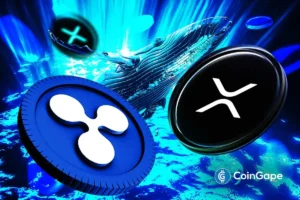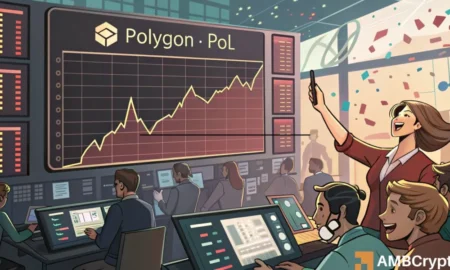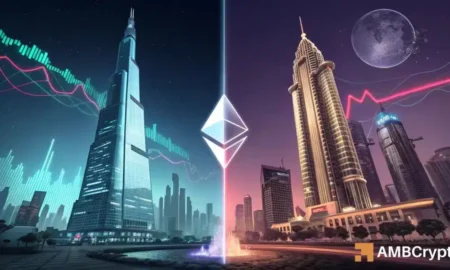Ethereum (ETH) Analysis: Key Insights into Market Movements
Ethereum (ETH) is currently experiencing a critical juncture in the cryptocurrency market as it sees a significant accumulation by whales, heightened volatility, and pressing resistance levels. Recently, three prominent ETH whales have amassed over 174,000 ETH, equivalent to around $540 million. This aggressive accumulation signals increased institutional interest, indicating a potential shift in market dynamics. As ETH trades near $3,100, just below a major resistance level of $3,200, all eyes are on whether bullish momentum can consolidate or if challenges lie ahead.
Whale Accumulation Signals Institutional Confidence
In a noteworthy period of less than two weeks, significant investments from Ethereum whales have raised eyebrows within the crypto community. One key wallet acquired 68,141 ETH (approximately $213.8 million) through FalconX, while two other entities collectively added over 106,000 ETH via Kraken. The substantial movement of capital suggests growing confidence in Ethereum’s potential, even amid broader market uncertainties. As these whales position themselves ahead of what could be a pivotal price shift, their activities emphasize the importance of monitoring institutional trends when analyzing ETH’s performance.
Ethereum’s NVT Ratio: Market Health Indicator
Another critical metric to examine is Ethereum’s Network Value to Transactions (NVT) ratio, which has surged to a staggering 194—its highest point this year. This ratio compares Ethereum’s market capitalization to the volume of transactions occurring on the network. Elevated NVT readings may indicate inefficiencies in network activity, even as prices rise. Historically, spikes in NVT have been correlated with market consolidations or price pullbacks. Consequently, despite current investor optimism, this metric raises caution as the disconnect between Ethereum’s price and its utility points to potential challenges ahead. The sustainability of recent bullish activity hinges on whether on-chain activity can adequately support Ethereum’s valuation.
Resurgence of Short-Term Holders
In a promising development, the 1-7 day realized cap HODL wave has shown a robust recovery, climbing to 2.69%. This metric reflects short-term holders actively trading their ETH, often indicative of speculative interest or profit-taking behavior. The resurgence in short-term holder activity aligns with the whale accumulation and rising prices, suggesting renewed market interest. If this trend continues, Ethereum may encounter increased volatility as traders react to swift price movements. The reengagement of short-term holders adds another layer of complexity to Ethereum’s evolving market landscape, influencing both price stability and speculative trading.
Stock-to-Flow Ratio: A Squeeze on Supplies
Ethereum’s Stock-to-Flow (S2F) ratio has reached an impressive 592, marking a notable rise indicative of supply constraints. A surging S2F ratio suggests an increasing scarcity of circulating ETH, raising bullish expectations, particularly in light of whale accumulation. While this metric serves as a long-term valuation tool, such an extraordinary surge in S2F may also bolster market confidence. However, if demand begins to dwindle or if profit-taking occurs, the market could face rapid reversals, underscoring the importance of monitoring demand dynamics. The interplay of whale interest and supply factors continues to shape market sentiment around Ethereum.
$3,100–$3,200: A Crucial Resistance Zone
Currently, the resistance zone between $3,100 and $3,200 represents a critical battleground for Ethereum traders. Binance’s ETH/USDT liquidation heatmap indicates a concentrated cluster of short positions in this price range, posing potential liquidation traps. As Ethereum approaches this pivotal zone, the possibility of triggering a liquidation storm looms large. A successful push through this key resistance level may pave the way for further upward momentum, while failure to convert these levels into support could drive the price lower. The outcome of this battle will be essential in shaping Ethereum’s near-term trajectory, amplifying the consequences for traders and investors alike.
Looking Ahead: Can Ethereum Maintain Momentum?
The future direction of Ethereum depends on several factors, particularly the sustained strength of bullish demand and improvements in on-chain activity. Whale accumulation and the rising stock-to-flow ratio evoke a sense of scarcity and confidence, bolstering a generally bullish narrative. However, concerns over the elevated NVT ratio and the formidable resistance at $3,200 amplify caution, leaving room for potential market corrections. As Ethereum approaches a crucial inflection point, observers must consider whether buyers can break through the resistance with sufficient volume-driven momentum or if hesitancy around overvaluation will precipitate a pullback.
In conclusion, Ethereum’s intricate market dynamics present both opportunities and challenges for investors and traders. With whale accumulation signaling institutional confidence, and key price levels defining immediate outcomes, staying informed is crucial for navigating this fast-paced market. As Ethereum solidifies its position or faces headwinds, the broader cryptocurrency landscape will undoubtedly feel the effects of its movements.
![[IP] Soars 35%, Outperforming Bitcoin and Ethereum – What’s the Secret?](https://icoinmarket.com/wp-content/uploads/2025/08/Chandan-2025-08-31T163248.671_11zon-1000x600-300x180.jpg)







![[IP] Soars 35%, Outperforming Bitcoin and Ethereum – What’s the Secret?](https://icoinmarket.com/wp-content/uploads/2025/08/Chandan-2025-08-31T163248.671_11zon-1000x600-450x270.jpg)







